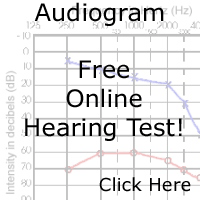|
>
>
>
>
>
>
>
>
>
>
>
>
>
>
>
>
>
>
>
>
>
>
>
>
>
|
|
 Phonak Hearing Aids
Phonak Hearing Aids
In 1969 Phonak introduced the Phonette with integrated circuits that vastly increase component density on chips. This means more electronics packed into smaller cases. Active filter technology coupled with compression limiting. In 1974 Phonak with cooperation with Phonic Ear, manufacturers FM systems used with Hearing instruments bring about a revolution in schools, institutes of further education and in the workplace. In 1977 Phonak launched the world's first hearing instruments that are offered in a choice of colors. In 1978 Phonak established an international reputation for children's hearing aids with its creation of the SuperFront PP-C. The first generation SuperFront was a very successful high-gain BTE hearing aids. The SuperFront also introduced a new type of audio input that produced a stable frequency response curve and provided optimum support for children. In 1980 Phonak launched SuperFront PP-C-L, which has technology that provides extended gain in the lower frequencies while maintaining gain in the higher frequencies. Which will become the characteristics of all future low-frequency-emphasis, high-gain hearing Aids from Phonak. With its second generation of SuperFront hearing instruments, in 1982 Phonak wins International recognition with a public tender from the Austrian Govt (NAL). In 1987 Phonak developed a high-gain hearing instrument by the name of PicoForte. With black-box and thin-film technologies, the PicoForte has the smallest high-gain of any other hearing aid. The PicoForte was anatomically designed to fit children's ears. In 1992, Phonak produced PiCS hearing computer, which was a digitally programmable hearing computer with remote control with AudioZoom. This system guarantees an optimal signal-to-noise ration where FM systems would be impractical (e.g. playgrounds). PiCS Hearing Computer could be operated with the Digital Handy Control DHC-1 remote control. In 1994 launched its first FM system. In 1994 Phonak's MicroVox FM system was the smallest of its kind in the world. The MicroVox transmits signals with guaranteed acoustic transparency, despite its compact and light weight design. In 1996 Phonak Launched PiCS Mark 2. The PiCS Mark 2 combined Non-Linear and linear amplification strategies in one hearing computer with multiple listening programs. PiCS Mark 2 came with a DHC-2 remote control that enabled users a discreet, yet detailed operation of the hearing instruments. The user could control each hearing aid separately or both simultaneously. In 1997 Phonak launched MicroLink, which was the world's smallest radio receiver. The MicroLink fit neatly into an "audio shoe" and is compatible with any Phonak BTE hearing instrument. Phonak also launched the E-PROM NovoForte, which was a high-gain hearing aid. The NovoForte was the first programmable hearing aid made for children. NovoForte was flexible with many special features including choice of signal processing helped ensure optimal fittings. In 1998 the PowerZoom P4 AZ was launched, it was the first digitally programmable power hearing aid computer with Phonak's unique AudioZoom technology. The PowerZoom was also compatible with MicroLink. The PowerZoom combined maximum gain with excellent sound quality. PowerZoom's cases came in a wide color range, from discreet skin tones to bright and cheerful. The PowerZoom hearing aid could be controlled discretely with the elegant DHC-4 SlimLine remote control. Phonak's current line of consumer hearing instruments include: Savia/microSavia, Perseo, Claro, Eleva/microEleva, Valeo/miniValeo, Aero, MAXX, Supero, MicroZoom, Piconet2, SonoForte2, Classica, PicoForte3 and the SuperFront.
|
|






 Phonak Hearing Aids
Phonak Hearing Aids





